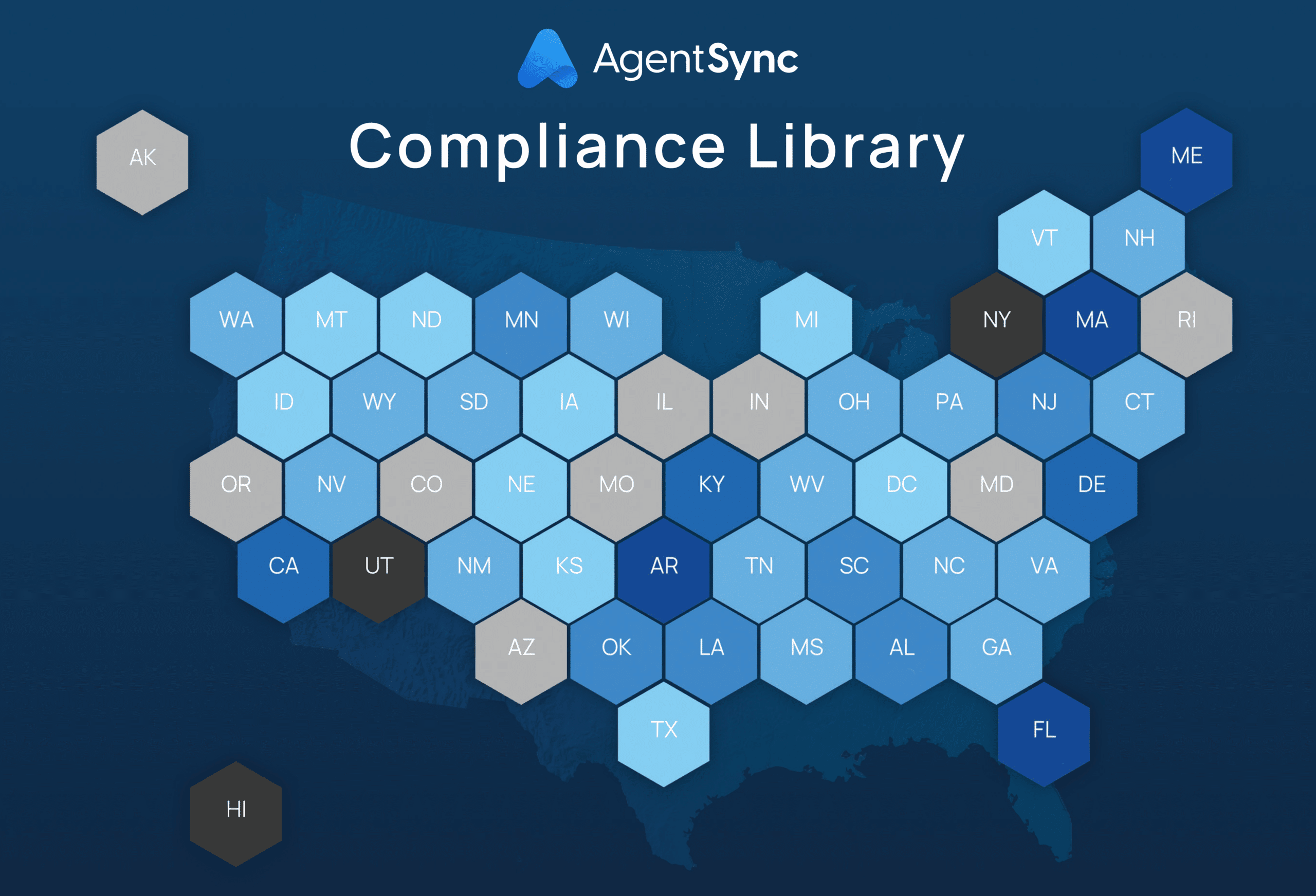

Property and casualty (P&C) insurers and agencies frequently work across state lines, creating complications for ensuring their producers are properly licensed. Thankfully, over the past few decades, more states have tried to make it easier for P&C producers to stay in compliance with help from the commercial lines multistate licensing exemption.
As usual, state variations make it impossible for P&C carriers or agencies to firmly establish a policy for all their producers to act uniformly. However, that doesn’t mean the commercial lines multistate licensing exemption isn’t heckn useful for P&C insurance businesses that write across state lines.
Instead, it means carriers and agencies that want to avoid licensing and appointing producers in every single state a single P&C contract might touch will need to take some time to understand the commercial lines multistate licensing exemption and its various iterations.
What is the commercial lines multistate licensing exemption?
Broadly, the exemption allows insurance producers who are selling commercial policies that cover risks in more than one state to avoid having to get a license for every state the business touches.
Some backstory: When the states rolled out the National Association of Insurance Commssioners’ Uniform Licensing Standards at the turn of the century, one provision was the exemption, which was intended to increase competition in the P&C market and decrease the administrative load of insuring complex business cases. Today, this exemption enjoys widespread adoption, and the majority of states recognize some version of the multistate exemption for commercial lines producers.
1. The commercial lines multistate licensing exemption is meant to be a condition for uniformity
Thanks to its inclusion in the Uniform Licensing Standards from the NAIC, states that haven’t adopted some version of the multistate licensing exemption for commercial lines producers don’t meet the NAIC’s standard for uniformity.
2. Some states have zero exemption
Despite the NAIC’s Uniform Licensing Standards being none-too-coy about states adopting some version of the commercial lines multistate exemption, there are still some that haven’t adopted them. (I know, you’re not shocked, and we aren’t either.)
The states and territories that don’t have any legal provisions for multistate licensing exemptions are California, Florida, and Nevada, Puerto Rico, and the U.S. Virgin Islands.
3. There are some variations to what constitutes an exemption
Now, don’t let yourself get confused by terms like “uniform.” Because, unsurprisingly, states often put their own special spin on things to take a tighter or looser interpretation of the regulation. In the case of multistate licensing exemptions for P&C producers, there are four major components of most states’ laws.
Insured business’s principal location is in a different state
The first requirement of the multistate exemption is that an insured business’s principal location, their base of operations, is outside of the exempting state. So, if the insured business is in Kansas, then Kansas isn’t going to give a producer any kind of licensing exemption. But, if that Kansas-based business is also insuring some properties in Missouri, then Missouri will be the one extending an exemption.
Producer is licensed in the state of the insured’s principal location
The second requirement of the exemption is that the producer who’s writing the business has to have the relevant licenses in the same state that the insured is located. Now, some states have a bit of variation here, with at least one (Indiana) specifying that the insured must be insuring property in the producer’s “home state,” where the producer has their resident license.
Contract covers risks in multiple states
Another requirement of the multistate licensing exemption is that the commercial contract in question has to cover risks in multiple states. Sure, this might seem like a no-brainer for why states would care about licensing for businesses based in other states, but, still, it’s worth spelling out.
Contract risks include the principal location
Some states also explicitly state that the business’s principal location should be included in the insurance contract. So, to return to our Kansas example, let’s say a carrier is insuring a business with its primary base in Kansas, but the contract will insure the business’s Missouri and Kentucky properties. According to Kentucky’s and Missouri’s versions of the multistate exemption law, the producer can only write it without being licensed in those states if there’s a Kansas property being insured in the contract, as well.
4. Texas’s law is more specific than others
Most states adhere to some variation of that four-part requirement, but, because it’s insurance regulation and it wouldn’t be fun if there weren’t some outliers, we thought we’d mention Texas.
The Texas multistate licensing exemption reads as follows:
Sec. 101.053. APPLICATION OF SUBCHAPTER.
- (a) Sections 101.051 and 101.052 apply to an act whether performed by mail or otherwise. Venue for an act performed by mail is at the place where the matter transmitted by mail is delivered and takes effect
- (b) Sections 101.051 and 101.052 do not apply to: […]
- (3) a transaction in this state that:
- (A) involves a policy that:
- (i) is lawfully solicited, written, and delivered outside this state; and
- (ii) covers, at the time the policy is issued, only subjects of insurance that are not resident, located, or expressly to be performed in this state; and
- (B) takes place after the policy is issued;
- (A) involves a policy that:
- (3) a transaction in this state that:
As you may see, Texas law includes a caveat that the exemption only applies if there aren’t Texas-local risks or services when the policy is issued. What that means is, any carrier issuing a policy with a Texas risk will need to have their producer licensed in Texas unless the Texas piece of the contract is some sort of addendum or revision that comes after the policy issue.
5. State interpretations may include surplus lines … or not
Sadly, one of the many areas of variance between the states when it comes to a multistate commercial licensing exemption is how they interpret the state law to include surplus lines… or not.
Many times, this exemption isn’t noted in law, and you won’t know whether the licensing exemption applies to surplus and excess brokers unless you have a detailed historical knowledge of state interpretations or bulletins issued by each state’s DOI.
This further causes complication for carriers and their downstream producers because many states require surplus lines brokers to hold a property and casualty LOA. So, it may be the case that someone could get a P&C license exemption for selling commercial policies on the admitted market across a state. But, if they sell a nonadmitted policy that touches on business in the same state, the insurance producer may still have to get a nonresident P&C license and a surplus certification.
Give yourself a break on multistate licensing
Whether you work in P&C, surplus, or any other area of insurance, licensing is no joke. And, if you’re doing business that crosses state lines, it’s a sure bet that, at some point, your producers are going to have to maintain resident and nonresident licenses in multiple states, even with exemptions.
See how AgentSync can help you upgrade your process for submitting and tracking your agents’ resident and nonresident licenses for major LOAs and schedule a demo with our team today.
Or, for more on the state variations in insurance regulation, check out the newly added multistate risk licensing exemptions on your favorite state pages in the Compliance Library.

